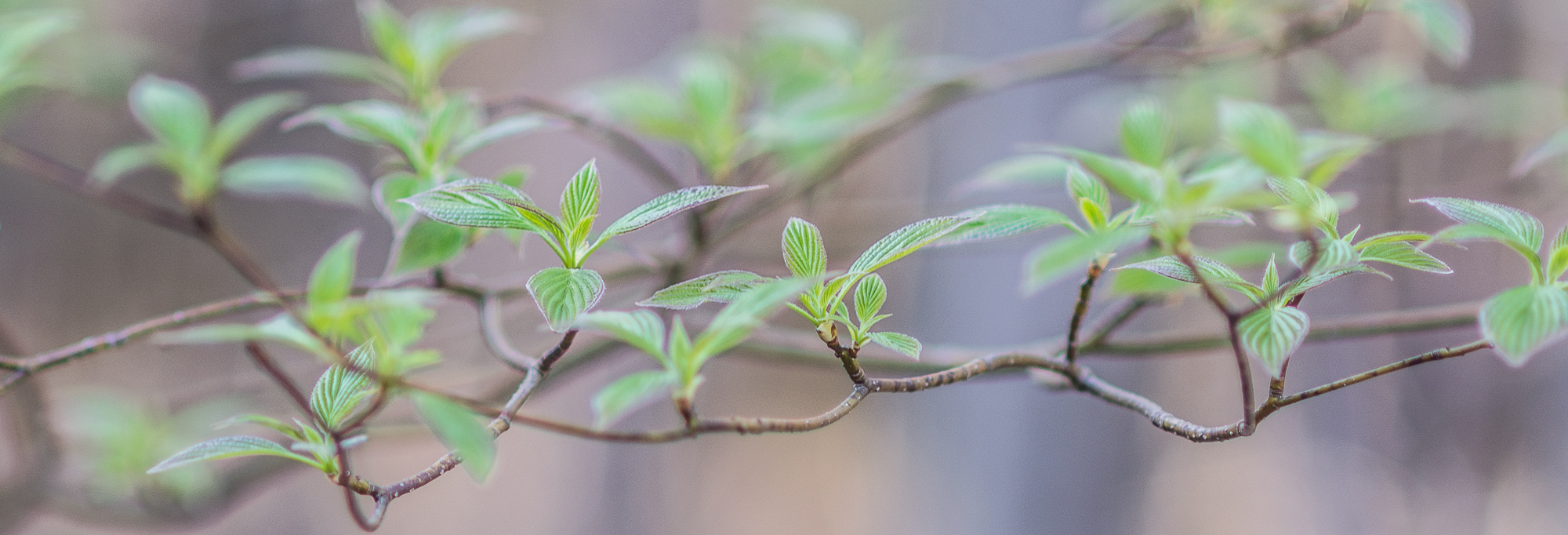February is a quiet month for growing native plants. However, there are still some species that you can start if you missed the December – January window for those species that need cold, moist stratification. It is still too early to sow any species that don’t need stratification. They can wait until early spring if you are able to start them indoors, or late spring for outdoor sowing.
If you’ve never heard of cold, moist stratification, do not worry! The seeds of many of Ontario’s native plant species are dormant, which protects them from germinating during a warm spell in the winter. In order for them to germinate they need to spend two or three months in damp and cold conditions. The moisture signals to the seed that it is in a place where it will be able to grow, and the cold temperature tells the seed that it is winter time.
Direct Sowing
There are a few ways to break the dormant state of the seeds so that they will germinate and grow. The first is to sow the seed directly in the ground in the fall before the ground freezes (October-November). The seeds will naturally experience winter and then germinate in the spring. Since it is February, we’ve missed the window on that method.
Winter Sowing
The second is called ‘winter sowing’. With this method you plant the seeds either in milk jugs or in pots inside a ventilated container and place them outside in the snow for two or three months. The ventilated container protects the seeds from rodents and provides a mini greenhouse in the spring. Early February is not too late for winter sowing. By March the window for winter sowing ends as the seeds will not have a long enough period of cold to break their dormancy.
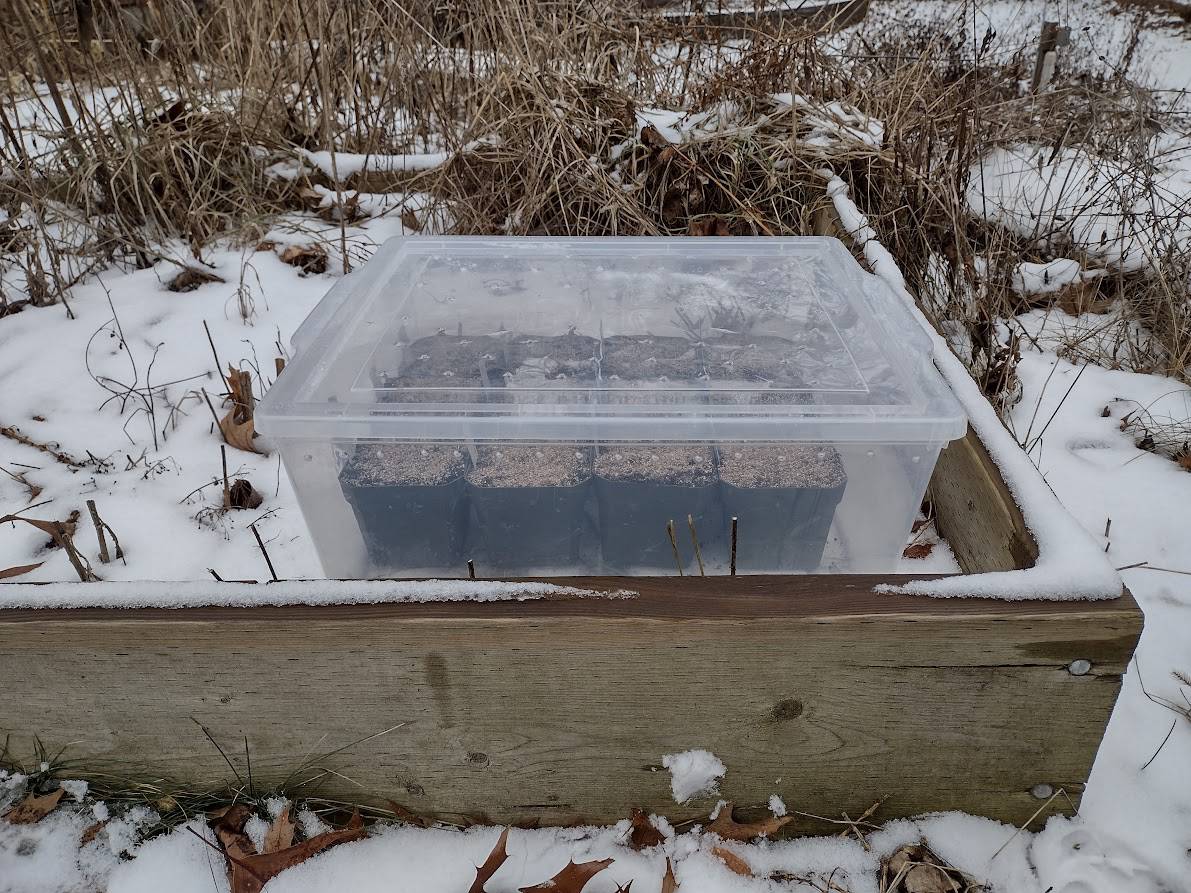
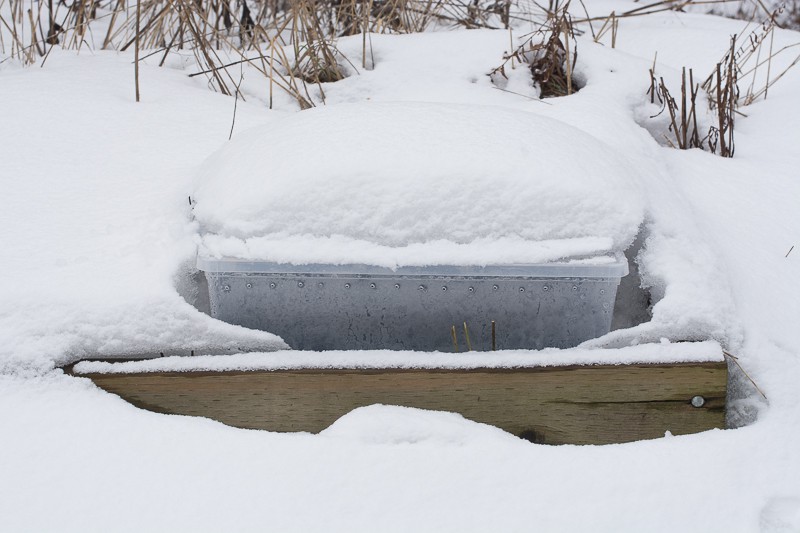
Cold, moist stratification in the fridge
The third method uses your fridge to provide the cold, moist winter conditions. An important point to note is that we are putting the seeds in the fridge, not the freezer! We want the seeds to be cold, but not frozen. This method involves mixing the seed with some damp vermiculite in a sealable plastic bag and placing it in the fridge. After two to three months you can take the bag out of the fridge and sow the seed/vermiculite mixture.
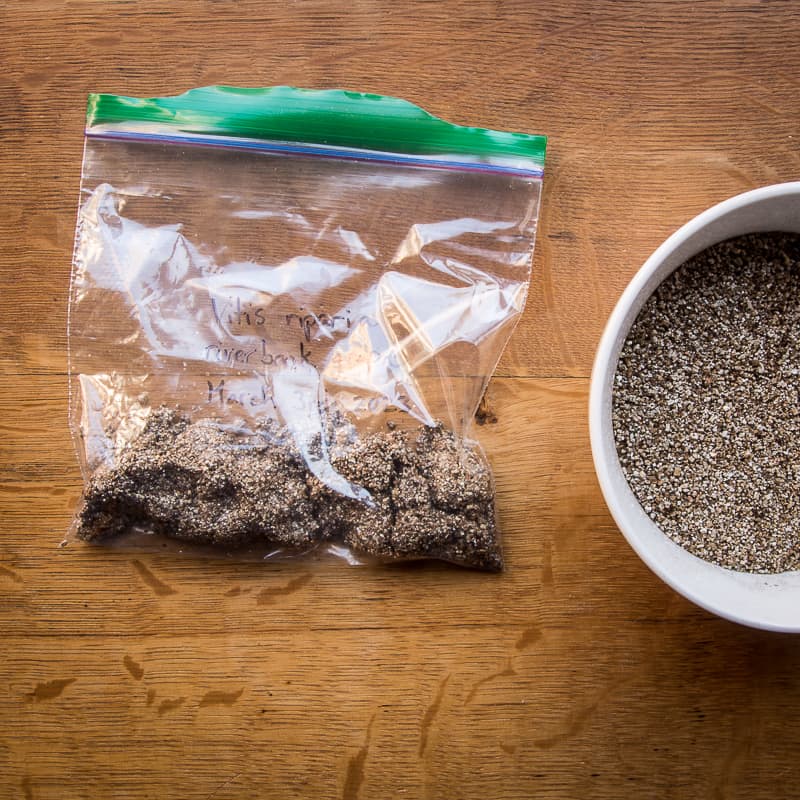
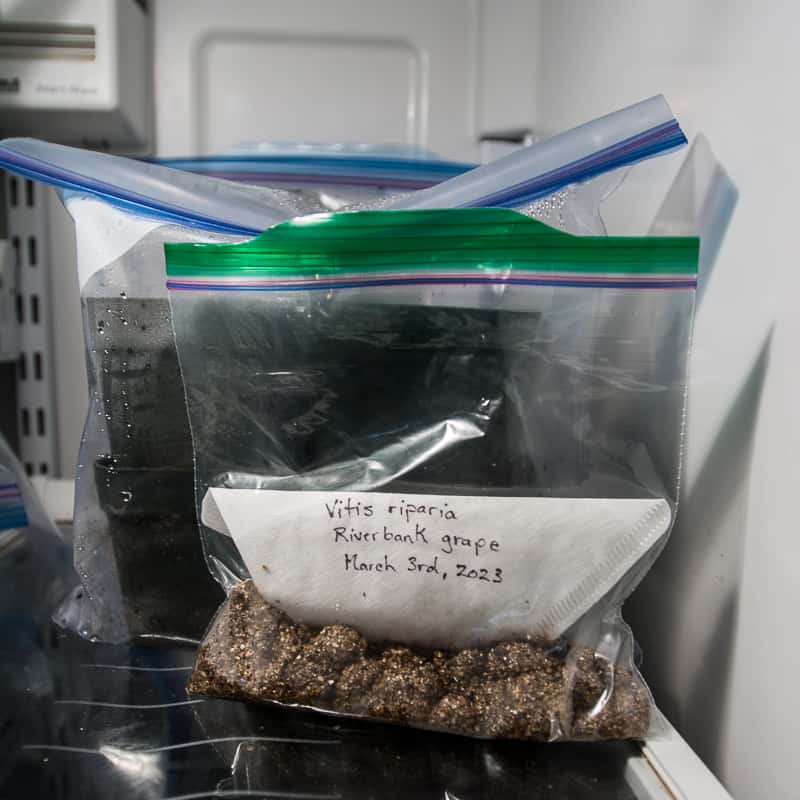
The following species are good candidates for both winter sowing outside and placing seeds in the fridge:
- Common Yarrow (Achillea millefolium) (only needs one month)
- Sedges (Carex sp.)
- Black-eyed Susan (Rudbeckia hirta)
- Goldenrods (Solidago sp.)
- Blue Vervain (Verbena hastata)
Wild Plants from Seed is a great resource for seed treatments. Check it out if you aren’t sure what treatment your species requires.

